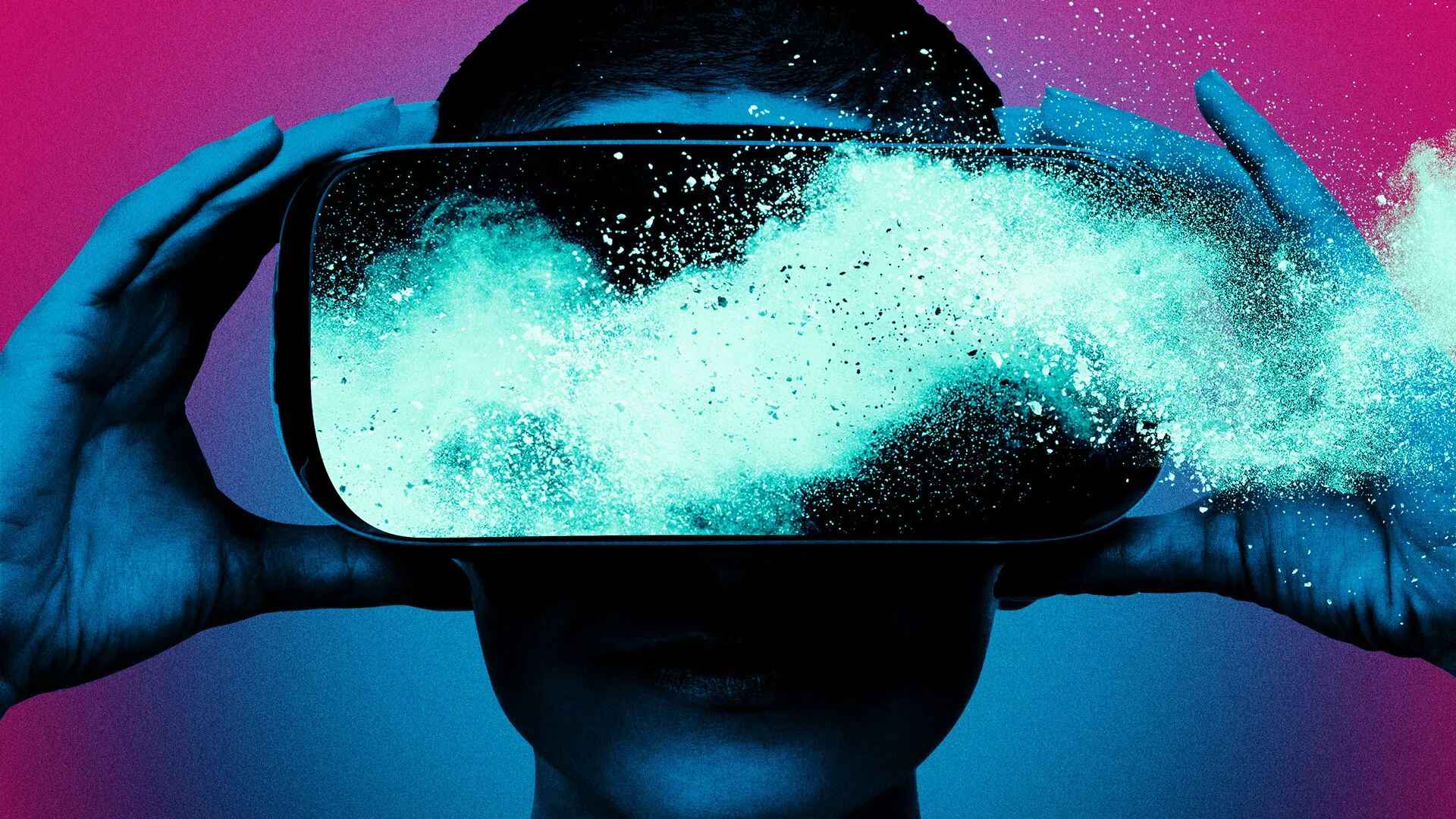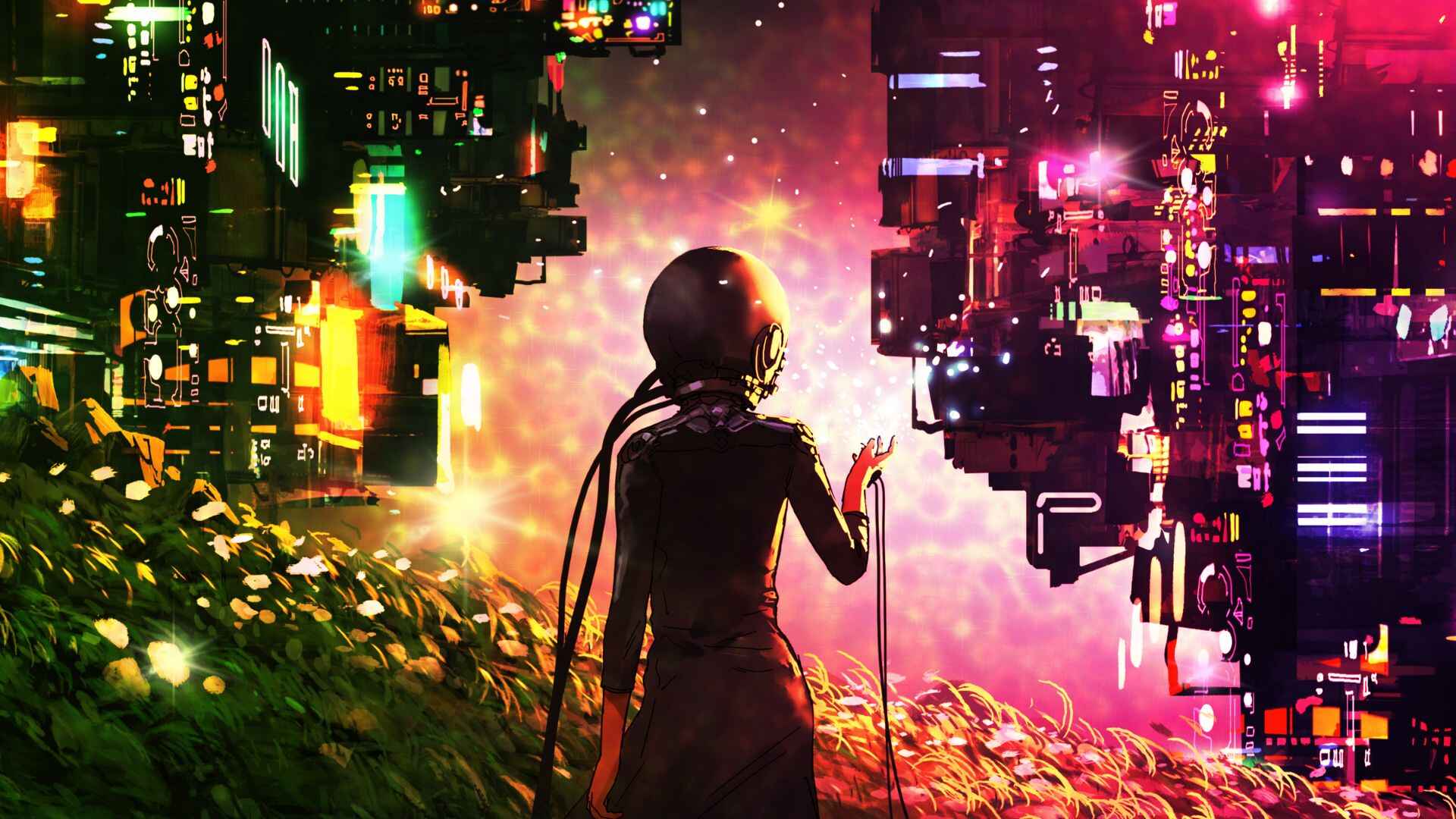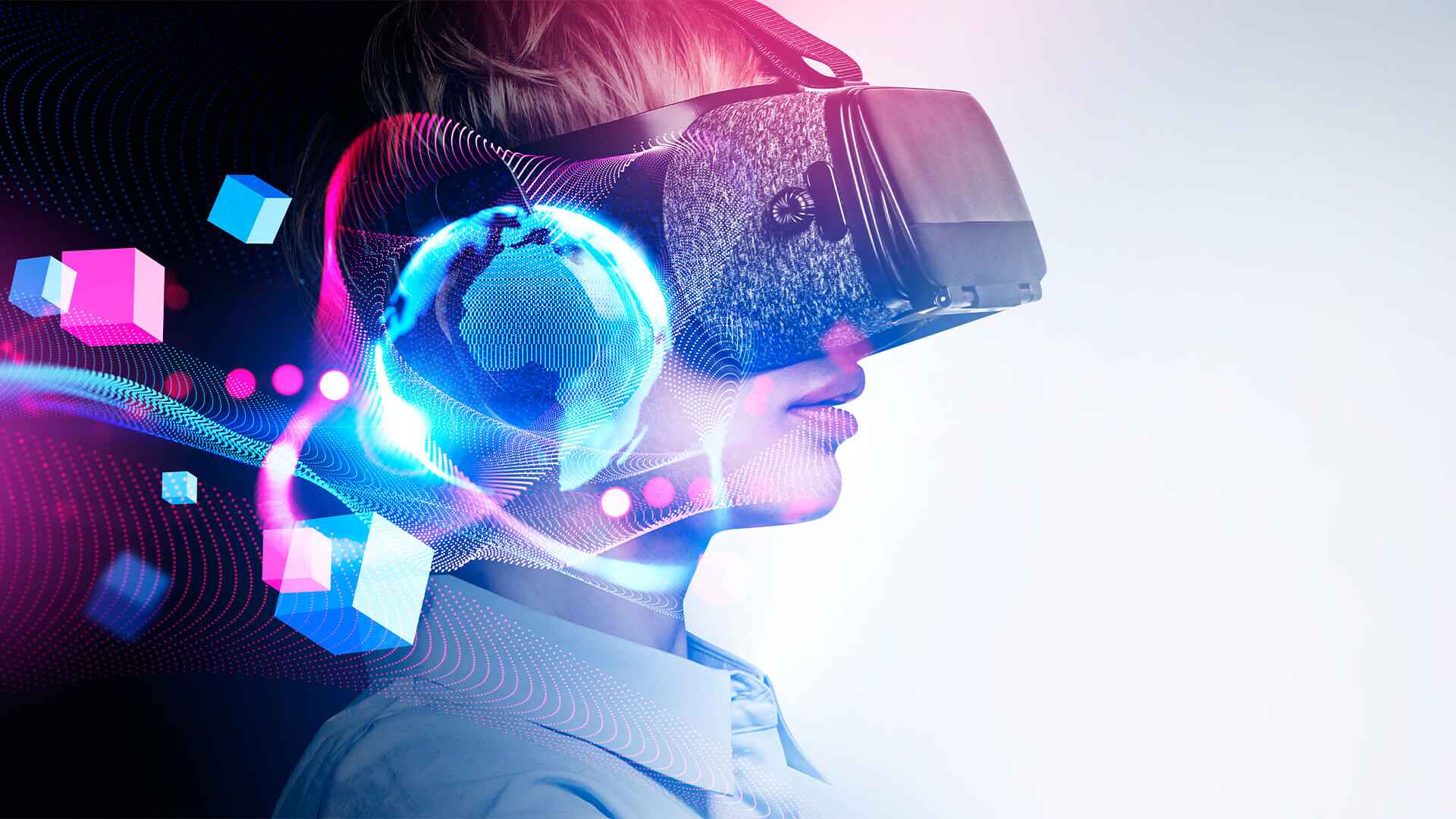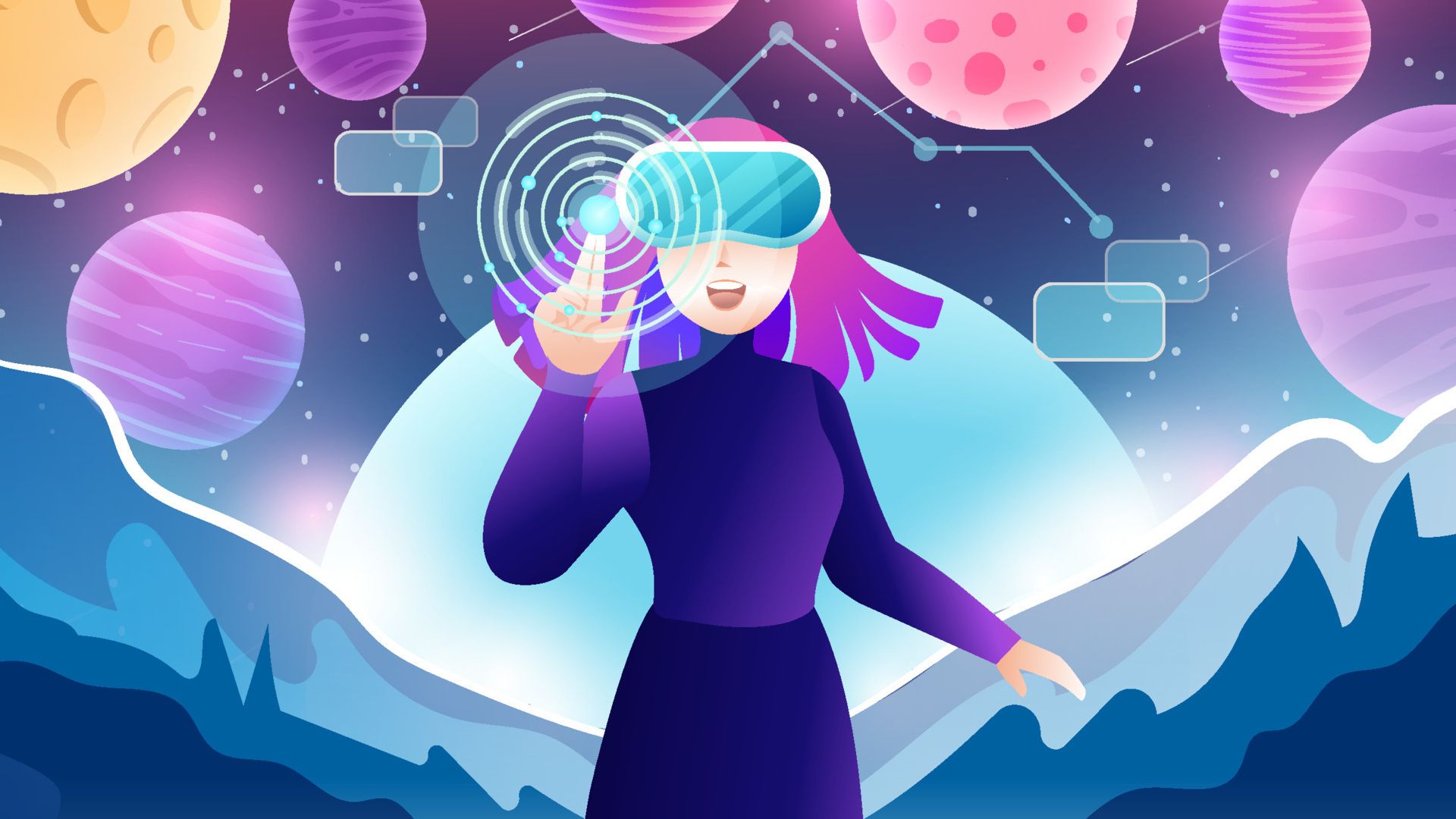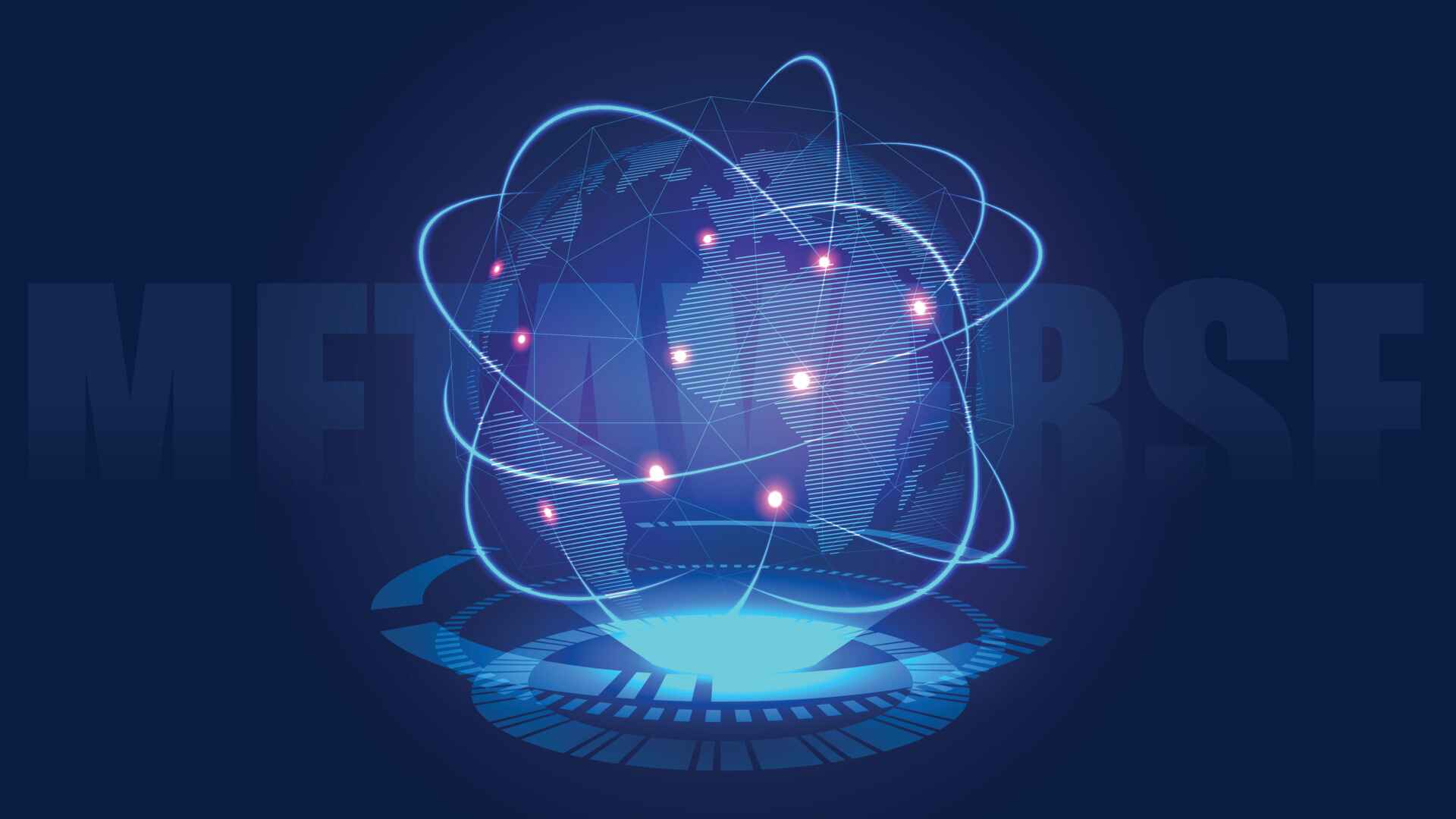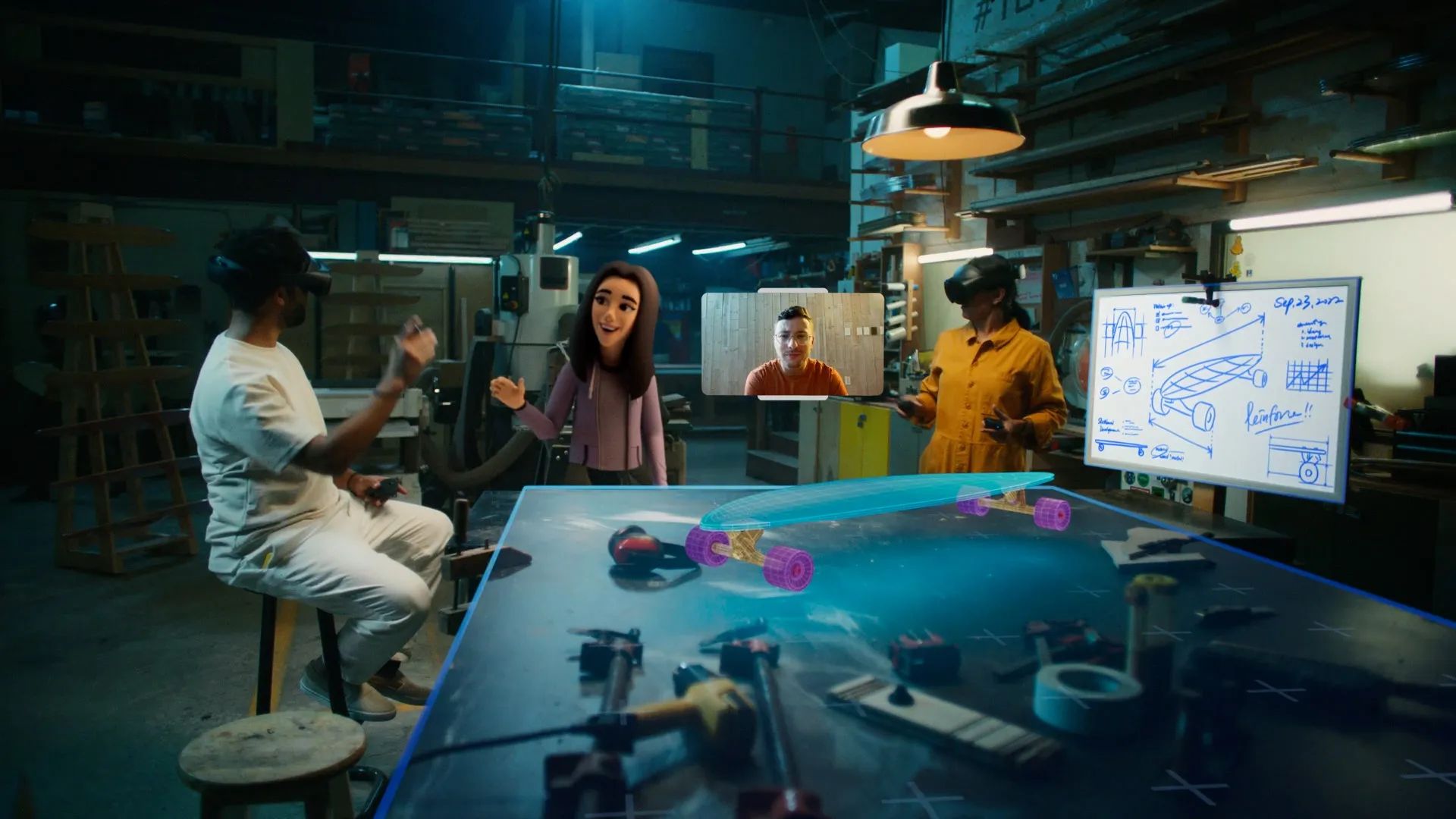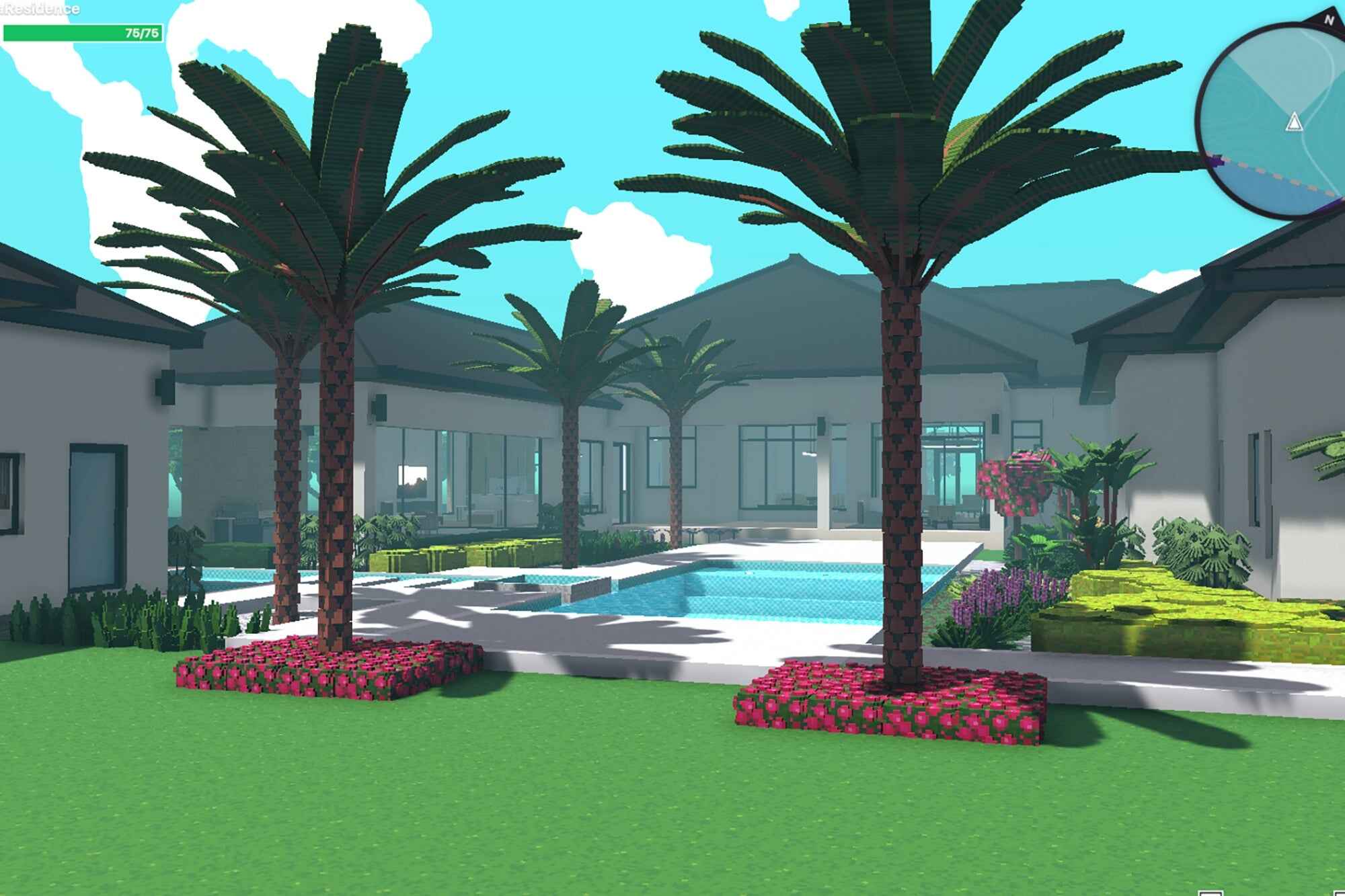Introduction
Welcome to the fascinating world of the Metaverse. It’s a term that has gained significant traction in recent years, captivating the imaginations of tech enthusiasts, gamers, and futurists alike. But what exactly is the Metaverse, and why is it generating so much buzz?
The Metaverse is a concept that refers to a virtual reality space where individuals can interact with a computer-generated environment and other users in real-time. It’s an immersive digital realm that incorporates elements of augmented reality, virtual reality, and the internet to create a seamless and interconnected experience. Think of it as a convergence of physical and digital realities, blurring the lines between the virtual and the real world.
In the Metaverse, users can explore, communicate, work, play, and create, all within a digital landscape that transcends physical limitations. It’s a place where you can attend virtual concerts, shop for digital goods, and even build and monetize your own virtual businesses. The possibilities within the Metaverse are boundless, limited only by our imagination and technological advancements.
While the concept of the Metaverse may seem like a futuristic dream, it has already made appearances in popular culture. Science fiction novels, such as Neal Stephenson’s “Snow Crash” and Ernest Cline’s “Ready Player One,” have explored the concept of a virtual reality world where people can escape from the constraints of their physical existence. These works of fiction have served as inspiration for many of the technological advancements we see today.
As technology continues to evolve, the concept of the Metaverse is becoming more tangible. Companies like Facebook, Microsoft, and Epic Games are investing heavily in the development of virtual reality and augmented reality technologies, bringing us one step closer to realizing the vision of a fully immersive digital universe.
However, with the excitement and potential of the Metaverse, there are also concerns and challenges that need to be addressed. Privacy, security, and accessibility are just a few of the issues that need careful consideration as the Metaverse continues to evolve.
In this article, we will delve deeper into the concept of the Metaverse, exploring its definition, its portrayal in fiction, its evolution, and its potential applications. We will also discuss the challenges and concerns that come with this virtual reality paradigm shift. So, fasten your seatbelts and get ready to embark on a journey into the world of the Metaverse!
What is Metaverse?
The Metaverse is a vast digital universe where people can explore, interact, and connect with each other through virtual reality. It is an extension of the physical world, with its own ecosystems, economies, and social dynamics. In simple terms, it is a collective virtual space that combines elements of augmented reality, virtual reality, and the internet into a seamless and immersive experience.
Unlike traditional online platforms or video games, the Metaverse aims to provide a persistent and interconnected digital realm that mirrors the complexity and diversity of the real world. Users can create and customize their own avatars, engage in various activities, and even build virtual properties and businesses. It goes beyond mere entertainment and gaming, encompassing a wide range of experiences including education, shopping, socializing, and work.
Central to the concept of the Metaverse is the idea of presence and immersion. Through advanced technologies like virtual reality headsets and haptic feedback devices, users can feel as if they are truly present in the digital world. Movements and actions are tracked and translated into the virtual environment, making the experience more realistic and interactive.
The Metaverse is not limited to a single platform or company. Instead, it is an interconnected network of platforms, applications, and devices that enable seamless communication and collaboration. Imagine being able to seamlessly transition from a virtual meeting room to a virtual concert, all within the same digital universe.
While the current state of the Metaverse is still in its infancy, with virtual reality technology continually advancing, we are inching closer to achieving a more comprehensive and immersive Metaverse experience. Companies like Facebook’s Oculus, HTC’s Vive, and Sony’s PlayStation VR are actively developing and improving virtual reality hardware and software to support the evolution of the Metaverse.
With the Metaverse, the possibilities are endless. From exploring virtual worlds to attending live events and even conducting businesses, the Metaverse has the potential to revolutionize how we interact with digital content and with each other. However, it also presents challenges, including issues of privacy, security, and creating inclusive experiences for all users.
As the Metaverse continues to mature and expand, it holds the promise of transforming the way we live, work, and play in the digital realm. The exciting journey into this alternate reality has just begun, and it is up to us to shape its future.
Metaverse in Fiction
The Metaverse has long been a staple in science fiction literature and has captured the imaginations of readers for decades. Authors such as Neal Stephenson and Ernest Cline have portrayed vivid and immersive virtual reality worlds, giving us a glimpse into what the Metaverse could become.
One notable work of fiction that popularized the concept of the Metaverse is Neal Stephenson’s novel, “Snow Crash.” Published in 1992, the book presents a dystopian future where people escape the realities of the physical world by immersing themselves in a digital realm known as the Metaverse. In this virtual reality, individuals interact through avatars, engage in virtual commerce, and even participate in high-stakes virtual combat. Stephenson’s vision of the Metaverse foreshadowed many of the features and possibilities that are now being explored in the real world.
Another well-known novel that explores the concept of the Metaverse is Ernest Cline’s “Ready Player One.” Set in a near-future where the real world is in decline, people seek refuge and fulfillment in a virtual reality oasis known as the OASIS. The OASIS is a vast and immersive digital universe where players can engage in adventures, games, and social interactions. Cline’s novel captures the sense of escapism and the allure of unlimited possibilities that the Metaverse offers.
These works of fiction have not only entertained readers but have also influenced the development of real-world virtual reality technologies. Concepts and ideas from these novels have inspired researchers and entrepreneurs to push the boundaries of immersive digital experiences.
It is not just literature that has explored the concept of the Metaverse. Movies and television shows, such as “The Matrix” and “Westworld,” have also delved into the idea of human existence and interaction within digital worlds. These depictions often raise philosophical questions about identity, consciousness, and the boundaries between reality and illusion.
While these fictional portrayals may seem fantastical, they provide valuable insights into the potential of the Metaverse. They serve as a source of inspiration, driving the advancement of technology and shaping our collective understanding of what the future of virtual reality could look like.
As we continue on the path towards realizing a fully immersive digital reality, it is important to acknowledge the influence that science fiction has had in paving the way for these innovations. The Metaverse of fiction is gradually becoming a reality, and the boundary between imagination and tangible virtual experiences is becoming increasingly blurred.
The Metaverse in fiction has sparked our curiosity, fueling our desire to create a virtual reality experience that mirrors the richness and complexity of the worlds depicted in books, movies, and television shows. As technology continues to evolve, the line between fiction and reality will continue to blur, pushing the boundaries of what is possible in the digital realm.
Evolution of Metaverse
The concept of the Metaverse has steadily evolved over time, starting from the early days of virtual reality to the immersive digital experiences we have today. The evolution of the Metaverse can be traced through key technological advancements and shifts in our understanding of what a virtual reality world can be.
In the 1980s, virtual reality began to emerge as a concept, with researchers and pioneers exploring the possibilities of creating computer-generated environments that users could interact with. The term “Metaverse” itself was coined by Neil Stephenson in his novel “Snow Crash,” published in 1992, where he described a virtual reality universe that people could access through a global network.
Early attempts at building the Metaverse focused on creating virtual worlds and online communities. Platforms like Second Life, launched in 2003, allowed users to create avatars and build their own virtual environments. While these early virtual reality spaces provided some level of immersion and interactivity, they lacked the seamless integration of real-world elements and the interconnectedness that define the modern-day Metaverse.
Today, the evolution of the Metaverse is driven by advancements in virtual reality and augmented reality technologies. High-quality virtual reality headsets, haptic feedback devices, and motion tracking systems have made it possible for users to have more immersive and realistic experiences within the virtual world.
Furthermore, the internet and social media have played a significant role in shaping the Metaverse. The rise of online communities, social networking platforms, and digital marketplaces has laid the foundation for a connected digital ecosystem where people can interact, share content, and even conduct business.
Companies like Facebook, Microsoft, and Epic Games are investing heavily in the development of the Metaverse. Facebook’s acquisition of Oculus and the subsequent launch of the Oculus Quest have brought virtual reality experiences to a broader audience. Microsoft’s HoloLens and the mixed reality experiences it offers hint at the potential for blending the real and virtual worlds. Meanwhile, Epic Games’ Fortnite has become a cultural phenomenon, serving as a virtual hub for socialization, entertainment, and even live events.
The evolution of the Metaverse is not just limited to entertainment and gaming. Various industries, such as education and commerce, are exploring how the Metaverse can enhance their offerings. Virtual classrooms, where students can engage with interactive learning materials and collaborate with classmates in real-time, showcase one of the many potential applications of the Metaverse. Companies are also investigating how virtual storefronts and digital currencies can revolutionize the way we buy and sell goods.
As the technologies supporting the Metaverse continue to advance, we can expect to see more immersive and interconnected virtual reality experiences. The line between the physical and digital worlds will blur, enabling us to seamlessly transition between the two. The promise of a fully realized Metaverse, where people can work, play, and socialize in a digital universe, is becoming increasingly tangible.
However, along with the exciting possibilities, there are also challenges that need to be addressed. Privacy, security, and the ethical implications of living in a digital world are just a few of the concerns that need careful consideration as the Metaverse continues to evolve.
As we contemplate the future of the Metaverse, it’s clear that we are on an exciting journey of discovery and innovation. The evolution of the Metaverse is a testament to the human desire to push the boundaries of what is possible, exploring new frontiers of virtual reality and transforming the way we interact with the digital realm.
Characteristics of Metaverse
The Metaverse is a virtual reality space that offers a unique set of characteristics that distinguish it from traditional online platforms or video games. These characteristics contribute to its immersive and interconnected nature, creating a rich and dynamic digital universe. Let’s explore some of the key characteristics of the Metaverse:
1. Immersion:
The Metaverse aims to provide a high level of immersion, making users feel like they are truly part of the digital world. Through advanced technologies such as virtual reality headsets, haptic feedback devices, and motion tracking, users can experience a sense of presence and interact with the virtual environment in a more realistic and engaging way.
2. Interconnectivity:
The Metaverse is not limited to a single platform or isolated experiences. It is an interconnected network of platforms, applications, and devices that enable seamless communication and collaboration. Users can interact with each other, share content, and participate in activities through multiple virtual reality spaces, all within the same digital universe.
3. Persistence:
The Metaverse provides a persistent digital environment that continues to exist even when users log out. In traditional online platforms or video games, the world resets or changes when users leave. However, in the Metaverse, the virtual reality space remains intact, allowing users to pick up where they left off and create a continuous and evolving experience.
4. User Agency:
Users have a high degree of agency in the Metaverse, allowing them to shape and influence their digital experience. They can customize their avatars, create and modify virtual environments, build virtual businesses, and participate in various activities based on their interests and preferences. This sense of agency empowers users to have a more personalized and meaningful engagement with the virtual world.
5. Diversity and Creativity:
The Metaverse offers a diverse range of environments, experiences, and opportunities for creativity. Users can explore different virtual worlds, participate in various activities, and collaborate with others to create new content and experiences. The Metaverse encourages creativity and enables users to express themselves in ways that may not be possible in the physical world.
6. Scalability:
The Metaverse has the potential to accommodate a massive number of users simultaneously. With advancements in cloud computing and network infrastructure, virtual reality experiences can be scaled to support millions of users without compromising the quality of the interactions or the performance of the virtual environment.
7. Real-world Integration:
The Metaverse aims to seamlessly integrate with real-world elements, blurring the boundaries between the physical and virtual realms. For example, virtual reality experiences can incorporate real-time data like weather conditions or traffic updates, enhancing the sense of realism and relevance within the virtual environment.
These characteristics of the Metaverse contribute to its ability to provide a transformative and immersive digital experience. As technology continues to evolve and more applications are developed, we can expect the Metaverse to become even more sophisticated, offering new possibilities and pushing the boundaries of virtual reality.
Potential Applications of Metaverse
The Metaverse offers a wide range of potential applications that go beyond entertainment and gaming. As this virtual reality space continues to evolve, it holds the promise of transforming various industries and shaping the way we live, work, and interact. Let’s explore some of the potential applications of the Metaverse:
1. Socializing and Communication:
The Metaverse can revolutionize social interactions by providing immersive and engaging virtual environments for people to connect and communicate. Users can meet and socialize with friends, family, and even strangers from around the world, enhancing the sense of presence and creating shared experiences through avatars. Virtual reality can enable more meaningful and immersive social interactions, bridging the physical distance between individuals.
2. Education and Training:
The Metaverse has the potential to transform education and training by providing immersive and interactive learning experiences. Virtual classrooms can offer a dynamic and engaging environment where students can explore concepts, participate in simulations, and collaborate with their peers. Training programs in various industries, such as healthcare and aviation, can also utilize the Metaverse to create realistic and hands-on learning experiences.
3. Virtual Commerce and Business:
The Metaverse has the potential to revolutionize e-commerce and digital business. Users can browse and shop for virtual goods and services within the virtual reality space, creating new avenues for businesses to reach customers. Virtual marketplaces can emerge, allowing users to buy and sell virtual assets and creations. Additionally, the Metaverse can provide a platform for virtual meetings, conferences, and remote work, enabling seamless collaboration and productivity.
4. Entertainment and Media:
The entertainment industry can leverage the Metaverse to offer immersive and interactive experiences. Film studios and game developers can create virtual reality experiences that allow users to become part of the story, enhancing the level of engagement and immersion. Virtual concerts and live events can transport users to virtual venues, providing unique and memorable entertainment experiences.
5. Healthcare and Therapy:
The Metaverse has the potential to enhance healthcare and therapy practices. It can be used for immersive medical training simulations, enabling students and professionals to gain practical experience in a safe and controlled environment. Additionally, virtual reality therapies can be developed to treat mental health disorders, phobias, and post-traumatic stress disorder, providing an innovative approach to therapy.
6. Art and Creativity:
The Metaverse can serve as a canvas for artists and creators to showcase their work and push the boundaries of artistic expression. Virtual galleries and exhibitions can provide immersive experiences for users to appreciate and interact with digital art. The Metaverse can also facilitate collaborative art projects, allowing artists from different parts of the world to come together and create virtual masterpieces.
7. Tourism and Exploration:
The Metaverse can take virtual tourism and exploration to new heights. Users can virtually visit iconic landmarks, historical sites, and even imaginary worlds, providing an immersive and accessible way to experience different places. Virtual reality can capture the essence of a location, enabling users to explore and learn about different cultures and environments in an interactive and engaging manner.
These are just a few examples of the potential applications of the Metaverse. As technology continues to advance and more innovations emerge, the possibilities within the Metaverse are boundless. It offers exciting opportunities to revolutionize industries, enhance experiences, and create new digital realms that parallel and intertwine with our physical reality.
Challenges and Concerns
While the Metaverse holds great promise and potential, it also comes with several challenges and concerns that need to be addressed. As we navigate this emerging virtual reality space, it is important to recognize and understand the potential risks and implications. Let’s explore some of the key challenges and concerns surrounding the Metaverse:
1. Privacy and Security:
One of the primary concerns with the Metaverse is the protection of users’ privacy and security. As users engage in immersive virtual experiences and share personal information, there is a need to establish robust safeguards to protect against unauthorized access, data breaches, and identity theft within the virtual realm. Ensuring the privacy and security of user data and interactions will be crucial for building trust and confidence in the Metaverse.
2. Inclusivity and Accessibility:
Ensuring that the Metaverse is inclusive and accessible to all individuals is another significant challenge. It is essential to consider factors such as affordability, technological barriers, and accessibility requirements for people with disabilities. Creating interfaces and experiences that cater to diverse audiences and addressing accessibility concerns will be crucial to prevent the creation of digital divides in the Metaverse.
3. Ethical Dilemmas:
The Metaverse raises ethical dilemmas that need careful consideration. Questions around digital identity, consent, and ownership of virtual assets emerge. Issues related to digital rights, intellectual property, and appropriate content moderation also require attention. Finding a balance between freedom, creativity, and responsible conduct within the virtual reality space is of paramount importance as the Metaverse continues to evolve.
4. Addiction and Mental Health:
The immersive nature of the Metaverse raises concerns about addiction and its impact on mental health. Spending excessive time in virtual environments and becoming detached from the physical world can have negative consequences on individuals’ well-being. It is crucial to promote healthy habits and establish guidelines for responsible use to mitigate potential addiction and mental health risks associated with prolonged exposure to the Metaverse.
5. Technical Limitations and Infrastructure:
The development and expansion of the Metaverse require robust technical infrastructure. Network bandwidth, computing power, and server capacities must keep pace with the increasing demands of immersive virtual reality experiences. Overcoming technical limitations and ensuring a seamless and lag-free experience for users will be crucial for the widespread adoption and success of the Metaverse.
6. Regulatory and Legal Frameworks:
The Metaverse presents new challenges for existing regulatory and legal frameworks. As virtual reality experiences become more intertwined with the real world, issues surrounding jurisdiction, governance, and intellectual property rights will need to be addressed. Establishing appropriate legal and regulatory frameworks that safeguard the interests of users and creators while fostering innovation will be essential for a thriving and sustainable Metaverse.
Addressing these challenges and concerns will require collaboration between technology developers, policymakers, ethicists, and the broader community. It is imperative to strike a balance between innovation and responsible development, ensuring that the Metaverse becomes a safe, inclusive, and ethically grounded virtual reality space.
The journey towards a fully realized Metaverse is a complex and evolving process. By addressing the challenges and concerns, we can maximize the benefits and potential of the Metaverse while minimizing the associated risks. Through careful consideration and proactive measures, we can shape the future of the Metaverse in a way that benefits society as a whole.
Conclusion
The Metaverse represents a transformative shift in the way we interact with digital content and with each other. It offers a vast virtual reality space where individuals can explore, create, communicate, and collaborate, blurring the lines between the physical and digital worlds. As we have explored in this article, the concept of the Metaverse has evolved from the realms of science fiction to the realm of possibility.
With advancements in virtual reality, augmented reality, and the internet, the Metaverse has the potential to revolutionize various industries and reshape the way we live, work, and play. From education and commerce to entertainment and healthcare, the applications of the Metaverse are vast and diverse.
However, as we embark on this transformative journey, we must also recognize and address the challenges and concerns that come with the Metaverse. Privacy, security, inclusivity, ethical dilemmas, addiction, technical limitations, and regulatory frameworks are just a few of the issues that require careful consideration and proactive measures. By addressing these concerns, we can ensure that the Metaverse is a safe, inclusive, and sustainable virtual reality space.
The future of the Metaverse holds immense promise. It represents a new frontier where human creativity, connectivity, and innovation can thrive. It offers opportunities for collaboration, exploration, and self-expression that transcend physical barriers.
As we continue to push the boundaries of technology, it is important to approach the development and expansion of the Metaverse with a user-centric mindset. The experiences within the Metaverse should be accessible, diverse, and meaningful for individuals from all walks of life. This requires us to foster innovation, collaboration, and responsible development.
The emergence of the Metaverse is an exciting chapter in the evolution of virtual reality, bringing us closer to creating a digital reality that parallels and intertwines with our physical world. It is up to us, as users, creators, developers, and decision-makers, to shape the Metaverse into a space that reflects our values, safeguards our privacy, promotes inclusivity, and fosters ethical conduct.
As we journey into the Metaverse, let us embrace the possibilities it offers while being mindful of the challenges and responsibilities that come with it. By balancing technological advancement with ethical considerations, we can create a Metaverse that enhances our lives, expands our horizons, and brings us closer together in this interconnected digital universe.







